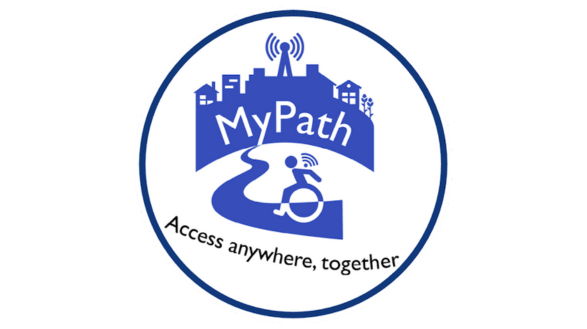Wheelchair user? Miami University’s crowd-sourced and AI-based accessibility project wants to map your path
With the input gained from participants, MyPath will be more able to help local wheelchair users find accessible routes to the places they go every day.

Wheelchair user? Miami University’s crowd-sourced and AI-based accessibility project wants to map your path
When it comes to his current accessibility project, you could say Miami University associate professor Vaskar Raychoudhury is on a roll.
Raychoudhury’s project, a novel artificial intelligence-based system called MyPath, is designed to help wheelchair users identify which paths they can take. MyPath, first begun at Miami University, is a joint venture developed collaboratively with University of Maryland at Baltimore County and University of Wisconsin Milwaukee. It is a complete end-to-end accessible routing and navigation system with an accessible app. Equipped to classify built and natural surfaces as accessible or inaccessible for wheelchair users, MyPath technology utilizes wheelchair-induced vibration patterns collected by sensors (accelerometer, gyroscope, and GPS, for example) embedded in smartphones.
Today, the MyPath team has reached a crucial point in their research, and they are ready to take the technology to the next level – with help from volunteers. Raychoudhury and his colleagues are currently reaching out to local Butler County wheelchair users to participate in a MyPath data collection study. With the input gained from participants, MyPath will be more able to help local wheelchair users find an accessible route to the places they go every day. Compensation opportunities are available for participants who contribute significant data to the project. Participants will also have the full right to decide when, where, and how long they would like to contribute data.
Raychoudhury, whose research interests include Advanced AI and the Internet of Things, first began studying technological solutions for accessibility after encountering obstacles faced by his father when using a wheelchair. When accompanying his father in different cities and communities in 2018, Raychoudhury discovered many obstacles to smooth passage on so-called “wheelchair accessible” paths.
For example, certain common pathway materials – such as gravel or stone – can hinder mobility for wheelchair users. The MyPath app is designed to define various environmental conditions like these, along with certain types of pavement barriers that could cause people difficulty reaching their destinations.
“I didn’t think about the difficulties to accessibility until I faced pushing a wheelchair through many different types of surfaces, from gravel to sand to grass,” Raychoudhury said.
Thanks to a $600,000 award from the U.S. Department of Health and Human Services Administration for Community Living in 2021, Raychoudhury and his team have been able to fund significant research and development of the MyPath system. In the coming years, the MyPath team aims to extend their research by developing a Generative AI-based personalized navigational assistant to facilitate community participation. This will help users with various disabilities while visiting unfamiliar surroundings, such as incoming students coming to a university campus, or tourists visiting new places.
“The practicality of MyPath can positively change people’s lives,” Raychoudhury said. Volunteers can learn more and sign up to help here.